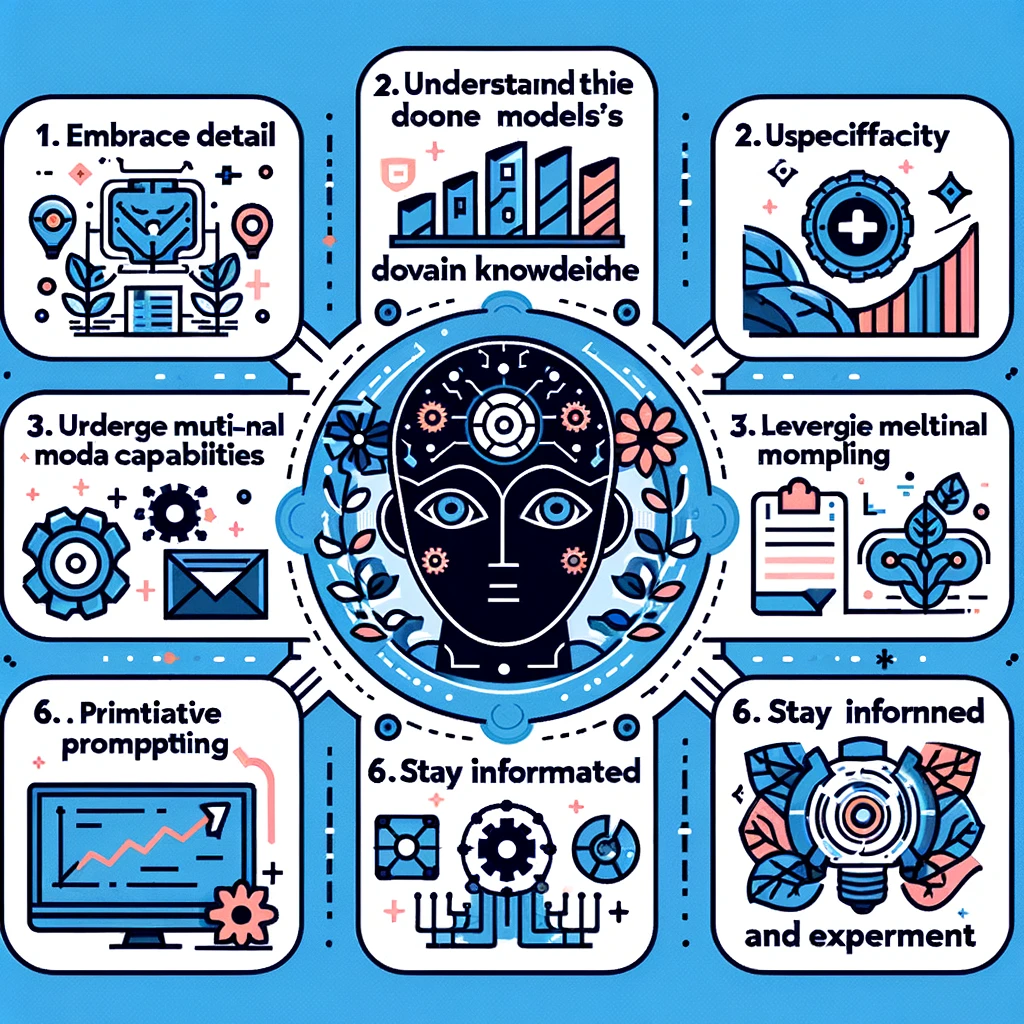Introduction
As artificial intelligence continues to evolve, mastering the art of prompting AI models has become an essential skill for anyone looking to leverage this powerful technology. Whether you’re a content creator, a researcher, or a business professional, understanding how to communicate effectively with AI can greatly enhance the quality and efficiency of your outcomes. This article provides practical tips for crafting better prompts in 2024, ensuring you get the most out of your interactions with AI.
Tip 1: Embrace Detail and Specificity
One of the most common mistakes in prompting AI is being too vague or broad. AI models, particularly those based on large language datasets, respond best to detailed and specific prompts. For instance, instead of asking for “a blog post on technology,” specify “a 500-word blog post on the impact of quantum computing on data security for businesses, suitable for a professional tech audience.” The more details you provide, the more aligned the AI’s output will be with your expectations.
Tip 2: Understand the Model’s Domain Knowledge
Before prompting an AI, it’s crucial to understand its limitations, especially in terms of the data it was trained on. AI models are typically trained on data available up to a certain point, so their knowledge of recent events or emerging technologies might be limited. Adjust your expectations and prompts accordingly, perhaps by providing or requesting updates on the latest developments if your subject matter is cutting-edge.
Tip 3: Use Iterative Prompting
Don’t expect perfection on your first try. Iterative prompting means starting with a broad prompt, reviewing the output, and then refining the prompt based on the initial results. This technique helps hone in on the exact response you’re looking for and can significantly improve the AI’s accuracy and relevance.
Tip 4: Leverage Multi-Modal Capabilities
In 2024, AI’s capabilities are not just limited to text. With advancements in multi-modal AI, you can now incorporate images, videos, and audio into your prompts. For instance, when working with a model like DALL-E, you could describe a scene visually as well as textually to generate corresponding images or adaptations. This can be particularly useful in fields like design, education, and entertainment.
Tip 5: Prioritize Ethical Prompting
As AI becomes more integral to our daily lives, ethical considerations must be front and center in how we use it. Ensure that your prompts do not reinforce biases or generate harmful content. Always consider the impact of your requests and the content generated by AI on diverse audiences.
Tip 6: Stay Informed and Experiment
AI technology is rapidly evolving. Staying informed about the latest tools, models, and best practices in AI can make a significant difference in how effectively you can use these technologies. Moreover, don’t be afraid to experiment. The more you practice and play with different types of prompts, the better you’ll understand what works and what doesn’t.
Conclusion
Mastering AI prompting is a dynamic skill that blends creativity, technical understanding, and ethical consideration. By following these tips in 2024, you can enhance your proficiency in interacting with AI, leading to more effective and innovative outcomes.
Visual Representation

